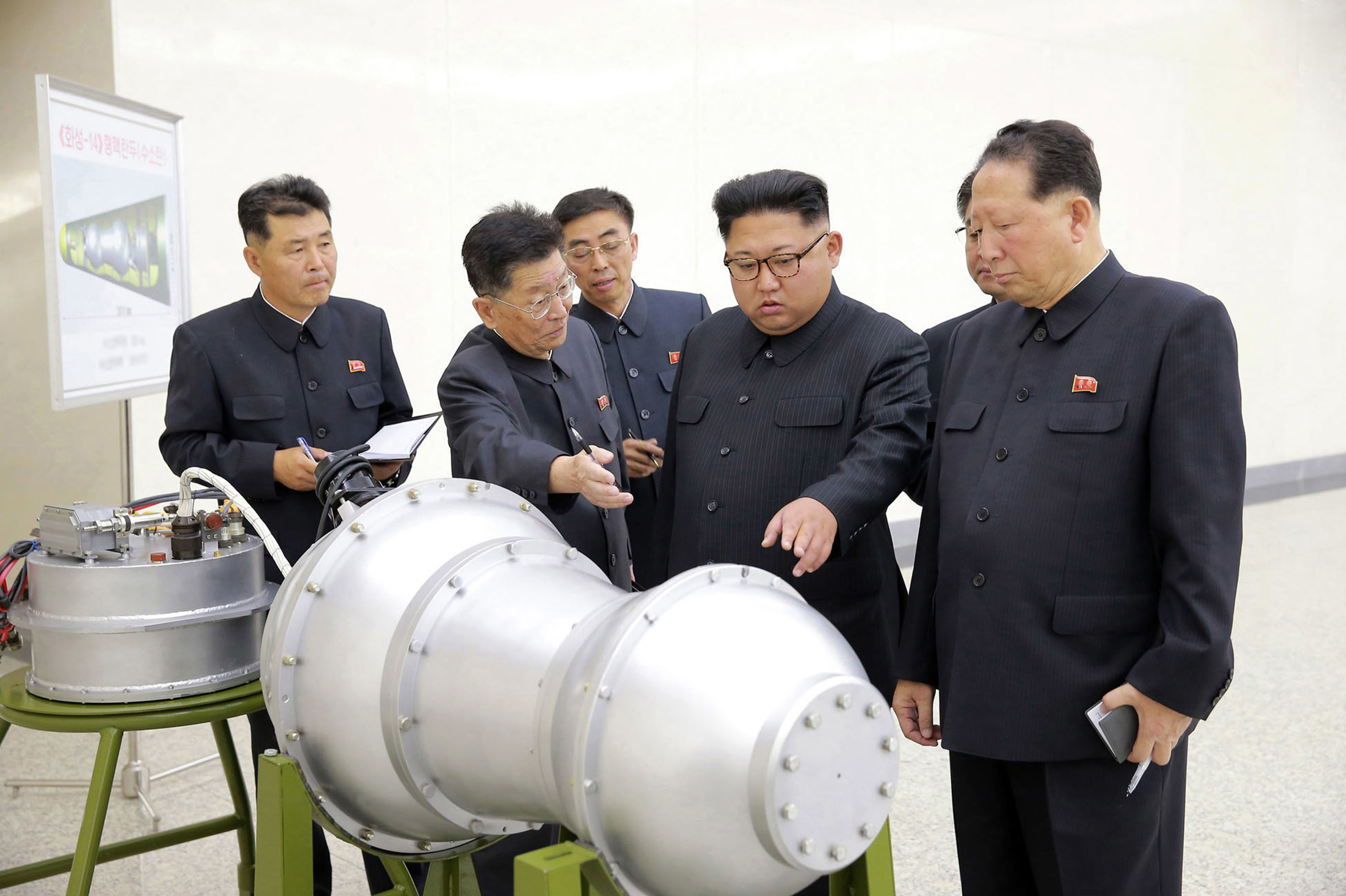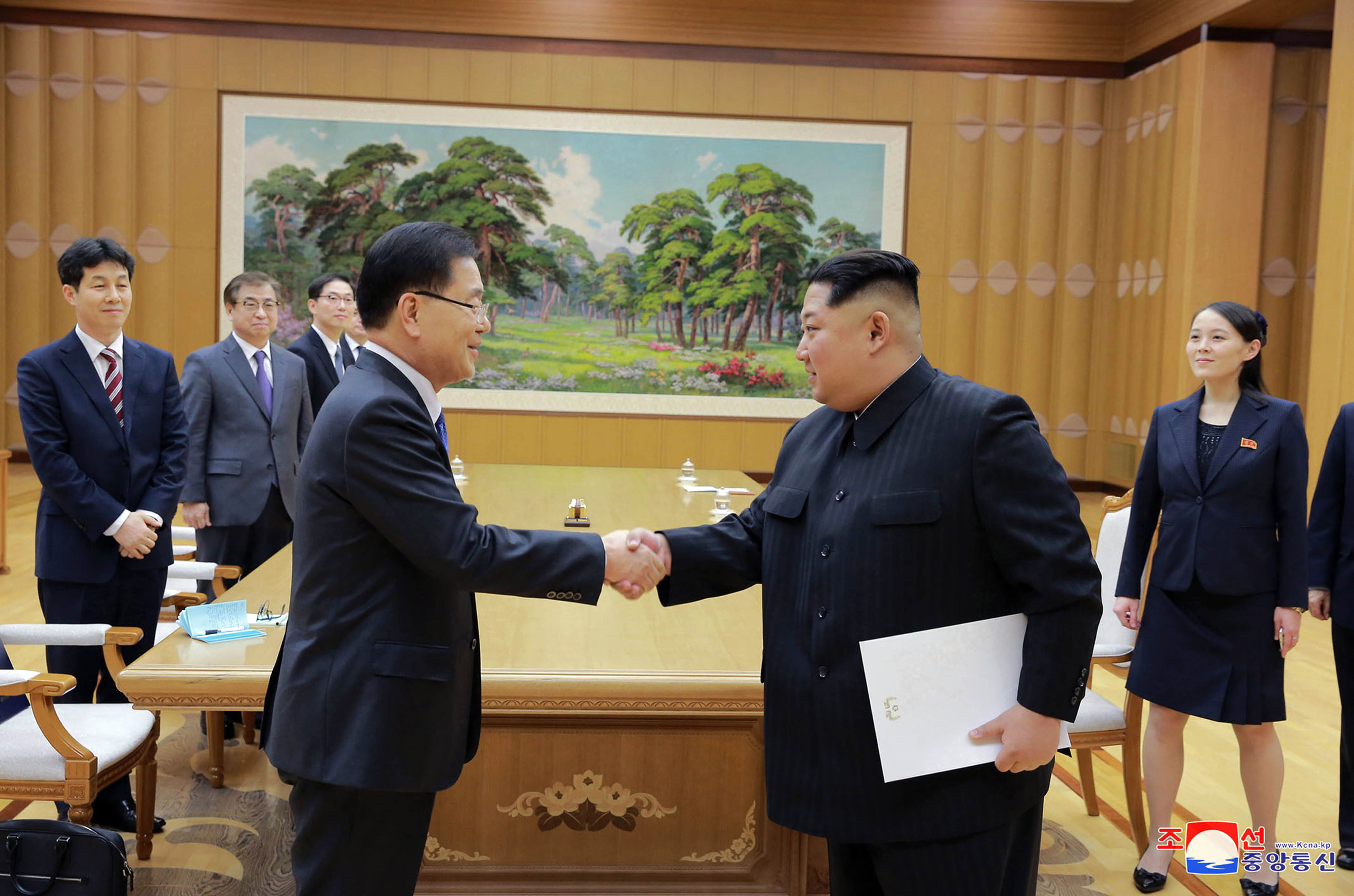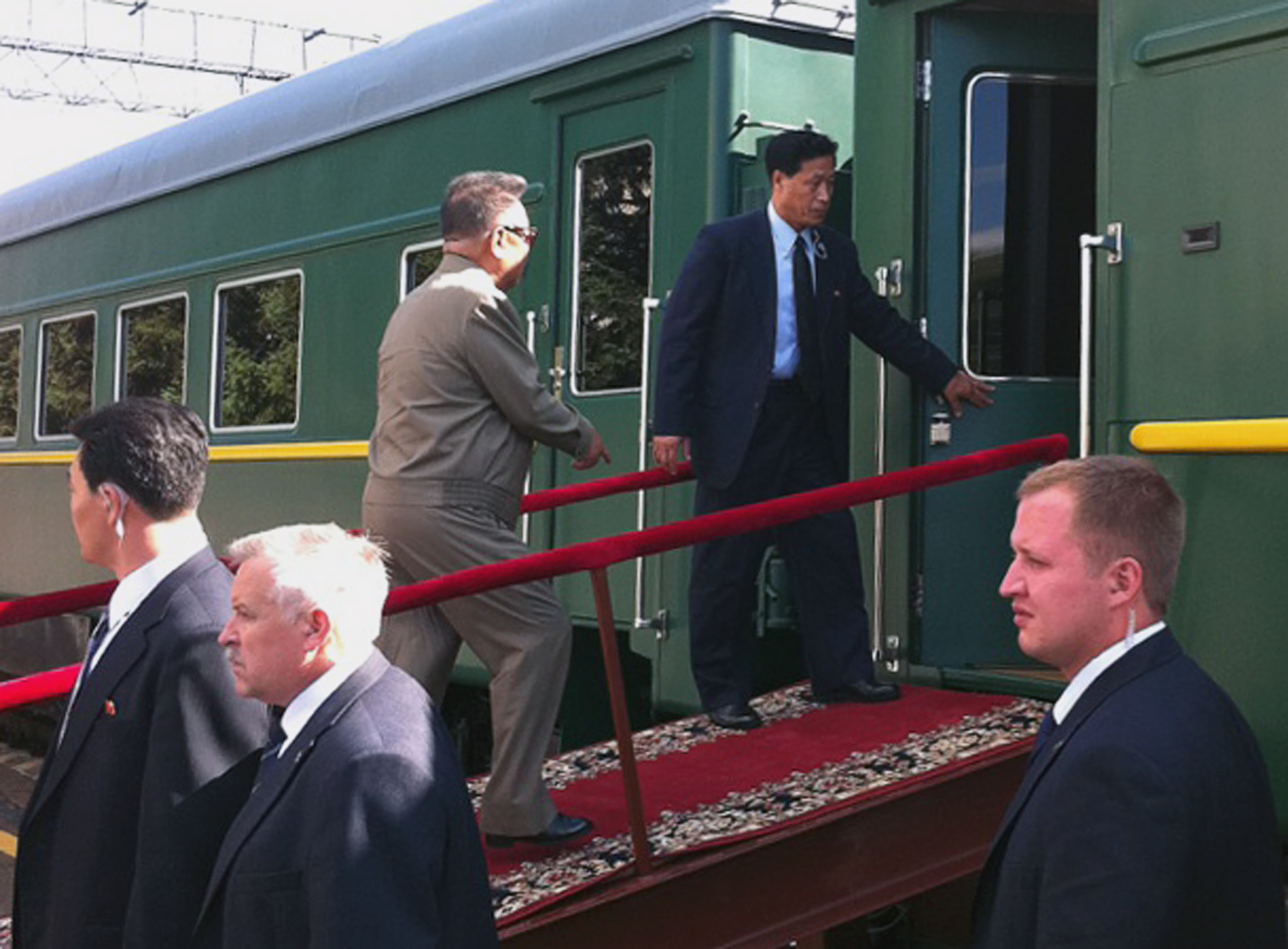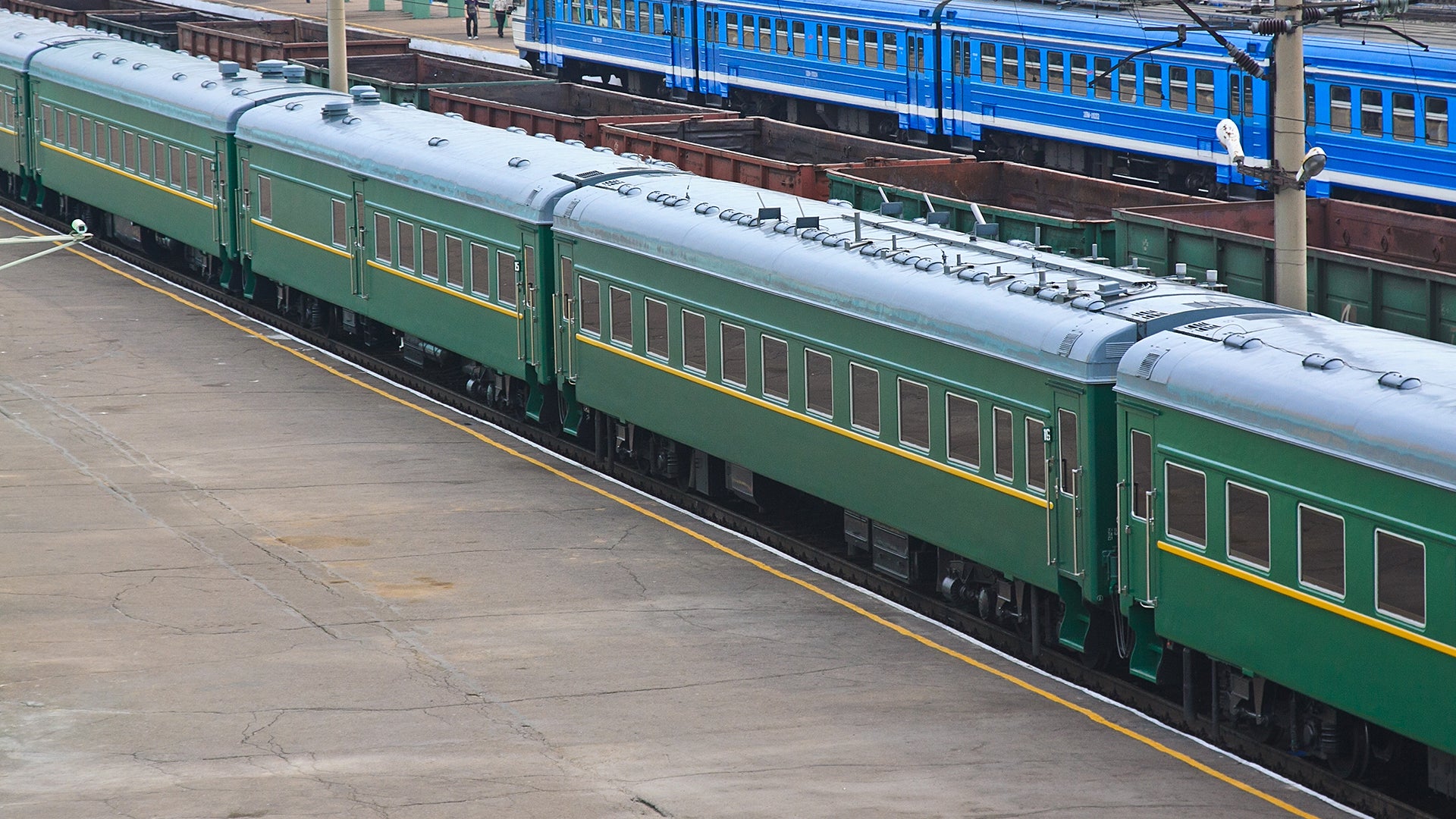Many signs point to a real possibility that Kim Jong Un has made a visit to Beijing aboard a heavily armored train very similar to the ones his father and grandfather constantly used. If Kim is indeed in the Chinese capital, it marks his first trip abroad in over six years since becoming the dictator of North Korea. It could also be an indicator of certain political realities back home and it raises the question of who is in charge of North Korea’s nuclear arsenal when the young despot is away.
Wings Versus Rails
First off, Kim’s possible use of a train instead of an aircraft to travel to Beijing is very strange. Simply put, he loves to fly and has had a fascination with aircraft since he was a child. The country’s aging IL-62M VVIP transports have been upgraded with modern executive interiors in recent years to accommodate foreign missions. Even Kim’s sister recently used one of these aircraft to travel to South Korea for the Olympics.

It’s possible that these aircraft are currently unserviceable, but Kim could just as easily take one of two An-148s that he uses to move around the country and even fly (or at least pretend he is flying) from time to time.
Even though the country has been hit very hard by sanctions and fuel reserves are supposedly tight, such a high-level mission would clearly be a priority and one would think that China would send a plane if North Korea didn’t have one that is serviceable.
It’s possible that the lack of total control over the asset could cause major security concerns for Kim’s personal security apparatus, especially as Chinese and North Korean relations have entered a chilly state as of late. It’s also possible that China could not supply the aircraft due to a tight sanctions regime it is supposedly abiding by. But still, a train, even an armored one, has its own security and logistical challenges.

Travel by rail could provide Kim with a higher level of connectivity and control during his transit, but that transit could take days instead of just a couple hours by air.
We just don’t know what would have prompted such a decision, even if it’s not Kim onboard but a very high ranking member of his administration, the use of a train seems odd. It is also possible that certain intelligence could have also impacted the decision, as the regime is notoriously paranoid about a decapitation strike.
Keep An Eye On The Place For Me
Considering that this would mark Kim Jong Un’s first trip abroad as supreme leader of North Korea, one has to wonder who is in charge of the country’s nuclear arsenal while he is gone. North Korea has claimed that Kim has unilateral control of the country’s nuclear weapons, even going as far as saying he has a button on his desk that can swiftly order an attack.
North Korea would have to rely on commercial or possibly Chinese military communications satellites for long-range command and control while Kim is abroad, both of which are vulnerable to disruption or even exploitation. With this in mind, it is worrisome to ponder what safeguards are left in place in his absence and who now has such destructive power at their fingertips.

The young ruler’s decision to leave his country at this time is also telling. He must feel comfortable enough in his own power to exit the country at such a tumultuous time. With U.S. and South Korean intelligence communities having only an opaque view into the inner workings of the regime, it isn’t clear if everyone is onboard with Kim’s abrupt change of course when it comes to foreign relations. For hardliners, inviting the American president for talks may seem like a catastrophic and dangerous move, one that could endanger their individual purpose in a future North Korea.
The regime relies on a constant existential threat from beyond its borders to keep its iron grip over its populace. Without grand enemies to point to the regime’s power cold rapidly erode. In fact, it could endanger the very fabric of North Korean society, one that has been taught that Americans are literally monsters for the better part of a century. For the old guard in North Korea’s ruling elite, their business is a military standoff, without it their positions and wealth could be in jeopardy.
Even after a series of brutal purges that lasted roughly between 2014 and 2016, where Kim executed or removed long-serving officials with deep ties to China, and with potentially opposing visions for the country, it isn’t certain, especially at this chaotic time, that there aren’t still factions that want to see him removed from power. As such, leaving to China, which has also grown weary of Kim’s leadership, would seem to be a risky move unless he was totally certain that his grip on power is assured.
With all this in mind, this trip to China would have to of been incredibly important for the impatient leader to board a slow-moving armored train in order to attend. And why now? What does China or Kim need to say to each other face-to-face?
Does China want a seat at the table during the talks between Trump and Kim? Are they concerned about what Kim may or may not be willing to concede?
The relationship between North Korea and China is utterly complex, but North Korea does represent a junk yard dog of sorts for China that can be strategically set loose to distract the U.S. or even open a second fighting front during a potential conflict between Beijing and Washington.
At the same time, it’s clear that Kim’s accelerated nuclear and missile programs, and his flippant behavior, have endangered the stability of the region—something that China is not keen on.
We will have to wait and see if Kim truly did make the rail voyage to Beijing, but as you can see, there is much more here to ponder than just the historic nature of the possible visit.

North Korean Rulers On Rails
North Korea’s armored VVIP trains are a staple of the Kim family’s reign. They have traveled as far from home as Eastern Europe in them and Kim Jong Un’s dad, Kim Jong Il, used them almost exclusively to move around North Korea as he had an acute fear of flying. In fact, in 2011 he died while traveling on one of his armored trains which were notorious for their extensive inventory of luxury food and alcohol.

These trains are not comprised of just a locomotive and a few cars, they are up to two dozen cars long and can include bookend decoy, route clearing, and rear guard security trains as well. The VVIP cars are supposedly very lavishly appointed, with ornate saloon cars, staterooms and dining facilities.
These trains also pack critical communications gear, spaces for a small army of heavily armed guards, as well plenty of room for support staff and the VVIP’s aids. Cargo cars can carry armored vehicles and other outsized loads.
There is supposedly a fleet of roughly six of these trains made up of nearly 100 cars in total that resides primarily in Pyongyang when they are not in use. It is widely rumored that some highly remote bunker facilities are only accessible by rail or helicopter, making these trains more than just a mode of diplomatic and administrative transport for the regime, they are a key element in North Korea’s continuity of government planning and are potentially intrinsic to the regime’s survival during a crisis.
The use of specialized trains to move leaders of nations around is a centuries old practice. The War Zone has detailed the historical use of trains to move American Presidents, but in this day and age the practice is becoming exceedingly rare. Still, North Korea is a time capsule of sorts and their military apparatus knows how to execute VVIP rail operations exceedingly well from decades of experience, so it does remain a viable mode of transportation even for the highest rungs of the regime.
We aren’t likely to get confirmation that Kim did indeed visit Beijing until his train is safely back in Pyongyang, if at all depending on the nature of the meeting. The motorcade that supposedly whisked the VVIP off to an estate outside of Beijing that is known to be used to house visiting foreign dignitaries, including Kim’s father in the past, was massive in size. In fact it looked very similarly configured as a U.S. presidential motorcade, the anatomy of which you can read all about here.
We will update this post over the next 12 hours if more information on this mysterious overnight visit by rail emerges.
Update: 5:00pm PST—
We have confirmation that Kim was indeed in Beijing and met with President Xi Jinping during his official state visit. He was accompanied by his wife as well and the trip lasted from Sunday to Wednesday.
Contact the author: Tyler@thedrive.com
